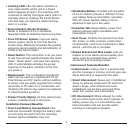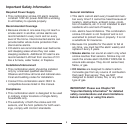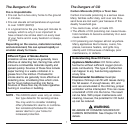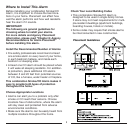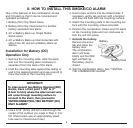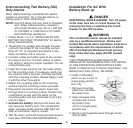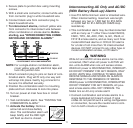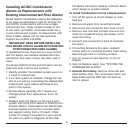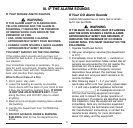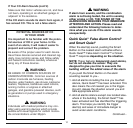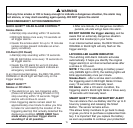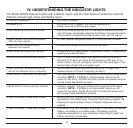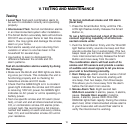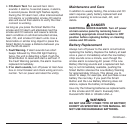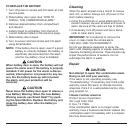
If Your Smoke Alarm Sounds
WARNING
IF THE ALARM LIGHT IS FLASHING RED-
YELLOW-ORANGE AND THE ALARM IS
SOUNDING, IT INDICATES THE PRESENCE
OF SMOKE WHICH CAN INDICATE THE
PRESENCE OF FIRE.
• USA: HORN SOUNDS 3 ALARMS
APPROXIMATELY EVERY FOUR SECONDS.
• CANADA: HORN SOUNDS 4 QUICK ALARMS
APPROXIMATELY EVERY SECOND.
YOU MUST QUICKLY DO THE FOLLOWING:
If the smoke alarm sounds and you have not
pushed the test button, it is warning of a danger-
ous situation.
Your immediate response is necessary. To pre-
pare for such occurrences, develop family escape
plans, discuss them with ALL household mem-
bers, and practice them regularly.
What to Do in Case of a Fire
1. Don’t panic; stay calm.
2. Leave the building as quickly as possible.
Touch doors with the back of your hand to feel
if they are hot before opening them. IF DOOR
IS HOT USE AN ALTERNATE EXIT. Crawl
along the floor, and DO NOT stop to collect
anything.
3. Meet at a pre-arranged meeting place outside
the building.
4. Call the fire department from OUTSIDE the
building.
5. DO NOT GO BACK INSIDE A BURNING
BUILDING. Wait for the fire department to
arrive.
13
III. IF THE ALARM SOUNDS
If Your CO Alarm Sounds
Carbon Monoxide has no taste, feel or smell –
but it can be FATAL.
WARNING
IF THE BLUE CO ALARM LIGHT IS FLASHING
AND THE HORN SOUNDS 4 RAPID ALARMS
APPROXIMATELY EVERY FIVE SECONDS, IT
INDICATES THE PRESENCE OF CO WHICH
CAN BE FATAL. YOU MUST QUICKLY DO THE
FOLLOWING:
1. Operate Test/Reset button;
2. Call your emergency services [fire department
or 911].
3. Immediately move to fresh air — outdoors or
by an open door/window. Make certain that all
persons are accounted for. Do not reenter the
premises nor move away from the open
door/window until the emergency services
responders have arrived, the premises have
been aired out, and your alarm remains in its
normal condition.
4.
After following steps 1 - 3, if your alarm
reactivates within a 24 hour period, repeat steps
1 - 3 and call a qualified appliance technician
(__________________) to investigate sources of
CO from fuel burning equipment and appli-
ances, and to inspect for proper operation of
this equipment. If problems are identified during
this inspection, have the equipment serviced
immediately. Note any combustion equipment
not inspected by the technicians and consult
the manufacturers’ instructions, or contact the
manufacturers directly, for more information
about CO safety and this equipment.



